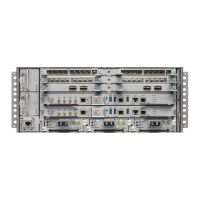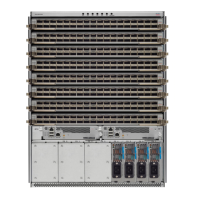2. router ospfv3 process-name
3. bfd minimum-interval milliseconds
4. bfd multiplier multiplier
5. area area-id
6. interface type interface-path-id
7. bfd fast-detect
8. commit
9. show run router ospfv3
DETAILED STEPS
PurposeCommand or Action
configure
Step 1
Enters OSPFv3 configuration mode, allowing you to
configure the OSPFv3 routing process.
router ospfv3 process-name
Example:
Step 2
Use the show ospfv3 command in XR EXEC mode to
obtain the process name for the current router.
RP/0/RP0/CPU0:routerconfig)# router ospfv3 0
• To configure BFD for IS-IS or MPLS-TE,
enter the corresponding configuration mode.
For example, for MPLS-TE, enter
MPLS-TE configuration mode.
Note
Sets the BFD minimum interval. Range is 15-30000
milliseconds.
bfd minimum-interval milliseconds
Example:
Step 3
This example sets the BFD minimum interval to 6500
milliseconds.
RP/0/RP0/CPU0:router(config-ospfv3)# bfd
minimum-interval 6500
Sets the BFD multiplier.
bfd multiplier multiplier
Step 4
Example:
This example sets the BFD multiplier to 7.
RP/0/RP0/CPU0:router(config-ospfv3)# bfd multiplier
7
Configures an OSPFv3 area.
area area-id
Step 5
Example:
Replace area-id with the OSPFv3 area identifier.
RP/0//CPU0:router(config-ospfv3)# area 0
Enters interface configuration mode and specifies the
interface name and notation rack/slot/module/port.
interface type interface-path-id
Example:
Step 6
• The example indicates a Gigabit Ethernet interface in
modular services card slot 1.
RP/0/RP0/CPU0:router(config-ospfv3-ar)# interface
gigabitEthernet 0/1/5/0
Routing Configuration Guide for Cisco NCS 6000 Series Routers, IOS XR Release 6.4.x
146
Implementing BFD
Enabling BFD for OSPFv3 on an Interface

